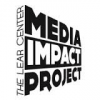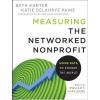Theory
The Annotated Guide to Tools & Resources provides tools, frameworks, and resources to help you develop and implement your evaluation. It’s a repository of useful, practical materials that can help you create an evaluation plan; design your evaluation approach; develop or adapt tools and instruments; and otherwise move your evaluation forward.
This Guide was originally assembled from many sources and fields and annotated by evaluator Suzanne Callahan of Callahan Consulting for the Arts. We continue to add resources. Your suggestions are welcome!
Do you have a useful tool or resource to add? Contact animatingdemocracy@artsusa.org.


















